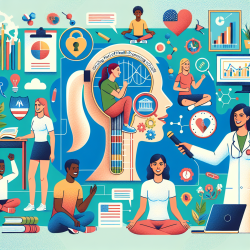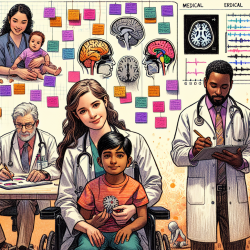Introduction
In the ever-evolving landscape of healthcare, the integration of technology into clinical practice is crucial for enhancing efficiency and improving patient outcomes. As speech language pathologists (SLPs), we are tasked with delivering high-quality care to children, and embracing innovative workflows can significantly aid in achieving this goal. The research article "21st Century Workflow: A Proposal" by Jeffrey L. Fine provides a compelling framework for integrating digital systems into pathology, which can be adapted to the field of speech language pathology.
Understanding the Proposal
The research outlines a visionary approach to digital pathology, introducing the concept of pathologists' computer-assisted diagnosis (pCAD). This system leverages advanced image analysis and integrates existing data to streamline diagnostic processes. By automating routine tasks, pCAD allows professionals to focus on clinical decisions that require human expertise. This approach can be mirrored in speech language pathology, where automation can enhance service delivery.
Application in Speech Language Pathology
Implementing a 21st-century workflow in speech language pathology involves several key steps:
- Data Integration: Utilize existing data from therapy sessions, assessments, and progress reports to create a comprehensive digital profile for each child. This data-driven approach allows for personalized therapy plans.
- Automation of Routine Tasks: Automate administrative tasks such as scheduling, billing, and report generation. This frees up valuable time for SLPs to focus on direct therapy.
- Enhanced Communication: Develop platforms for seamless communication between SLPs, parents, and educators. This ensures a collaborative approach to each child's development.
- Interactive Tools: Integrate interactive digital tools that engage children in therapy sessions, making learning more enjoyable and effective.
Benefits of a Digital Workflow
Adopting a digital workflow in speech language pathology offers numerous benefits:
- Improved Efficiency: Automation reduces the time spent on non-clinical tasks, allowing SLPs to see more children and provide more focused care.
- Data-Driven Decisions: Access to comprehensive data enables SLPs to make informed decisions about therapy strategies, leading to better outcomes.
- Enhanced Child Engagement: Digital tools can make therapy sessions more interactive and engaging, improving children's motivation and participation.
- Collaborative Care: Streamlined communication ensures that all stakeholders are aligned in their approach to supporting the child's development.
Encouraging Further Research
While the integration of digital workflows presents exciting opportunities, it is essential to continue researching and refining these systems. SLPs are encouraged to explore how technology can be tailored to meet the unique needs of their practice and the children they serve. By staying informed about advancements in digital pathology and related fields, SLPs can continue to innovate and improve their service delivery.
Conclusion
As we strive to provide the best possible outcomes for children, embracing a 21st-century workflow in speech language pathology is a step in the right direction. By integrating technology and automation into our practice, we can enhance efficiency, improve engagement, and make data-driven decisions that benefit the children we serve. To delve deeper into the original research and explore the potential of digital workflows, I encourage you to read the full article: 21st Century Workflow: A Proposal.










